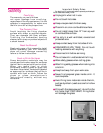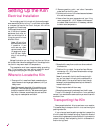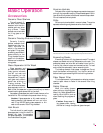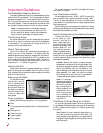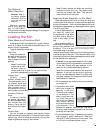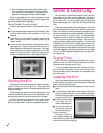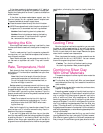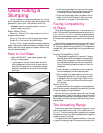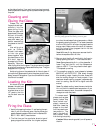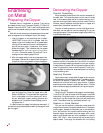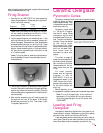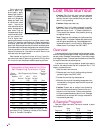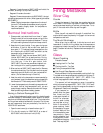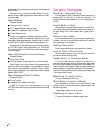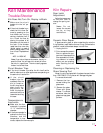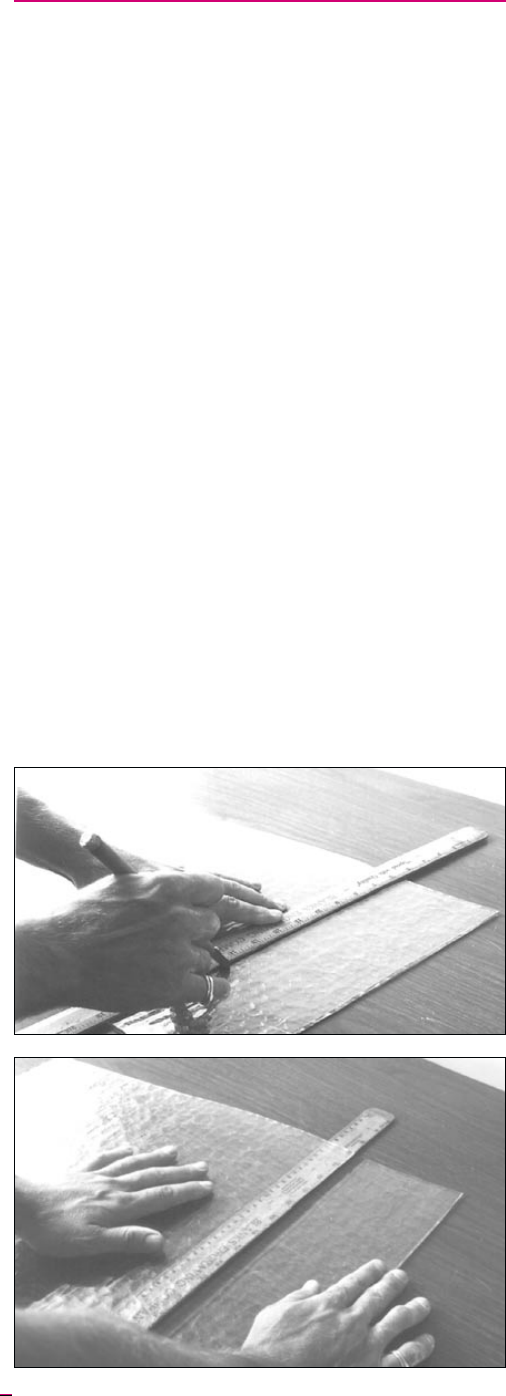
Glass Fusing &
Slumping
You will probably fire mostly stained glass, but you can
also fire standard float (window) glass. Some types of float
glass devitrify (form a dull, frosty surface) when fired.
Caution: Never fire tempered glass. It could ex
-
plode if heated inside a kiln.
Basic Glass Tools
Reservoir Glass Cutter uses a reservoir of oil to lu
-
bricate the cutter wheel.
Running Pliers are for cutting large pieces of glass.
Breaking Pliers are for cutting small strips.
Grozing Pliers shape the glass by chipping away the
edges.They areoftenused whenthescoreline doesn’tbreak
cleanly. Note that rough edges will become smooth when
fired to fusing temperature.
How to Cut Glass
Note: IMPORTANT! Wear safety glasses when
cutting or chipping glass.
1 Lay the glass on a clean surface. Mark off the cut
with a grease pencil or felt-tip pen.A small mark on
each end of the glass will do. Lay a wooden straight
edge overthe glass andline itup with themarks you
just made.
2 Hold the straight edge firmly and score the glass
with theglass cutter. Pressjust hard enoughso that
the scoring noise sounds steady and unbroken.
3 Place the straight edge under the glass so that an
edge is lined up with the score line you just made.
Press down on the glass. It will break cleanly.
Fusing Compatibility
of Glass
When glass changes temperature, it expands and con
-
tracts.The rateat whichglass changessize iscalledthe coef
-
ficient of thermal expansion. If you fuse two glass pieces to
-
gether and one changes size faster or slower than the other,
the fused piece may crack—even several months after fus
-
ing.
When different glasses have a close enough coefficient of
expansion tofuse successfully,they’re calledfusing compati
-
ble. Buy glass labeled fusing compatible. Or fuse glass that
has been cut from the same sheet, which guarantees com
-
patibility.
Fusing Compatibility Test
1 To testglass forcompatibility, fusesmall ½”square
sample piecesof different glassesonto alarger base
piece of clear transparent. It should extend beyond
thesmall samplepiecesby halfaninch oneachside.
One of the sample pieces should be cut from the
base piece.
2 Heat the glass to a temperature that completely
rounds the edges of the small sample pieces.
3 After the glass cools, place a polarizing filter under
the glass and another filter over the glass. Look at
the glasswith light shiningthrough it (holdit over a
lamp). Turn one of the filters until the filters are at
their darkest.
Results of the Test
If you see a halo around the edges of the small glass sam
-
ples,thisusually meanstheglassisnot compatible.Ifyousee
no halo, the glass is fusing compatible.
Why did we include a sample square cut from the base
transparent glass? It tests for annealing. A halo around that
piece means the glass was not annealed properly. Perform
the test again, this time cooling more slowly through the an
-
nealing range.
The Annealing Range
Each type of glass has a temperature range that it must
pass through slowly when it cools. This is called the anneal
-
ing range. This slow cooling gives hot glass time to release
the stressof cooling.If youcool theglass toofast throughthe
annealing range, it will break.
The larger and thicker the glass, the slower it must pass
through its annealing range. You cannot over-anneal, so err
10




